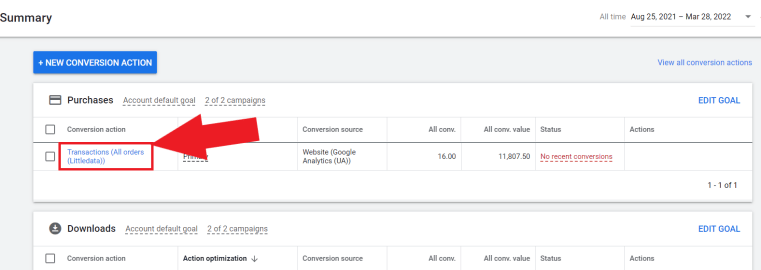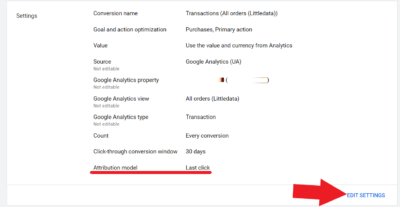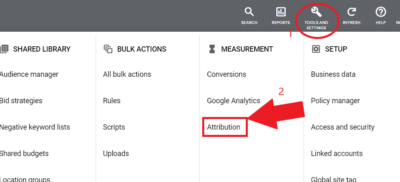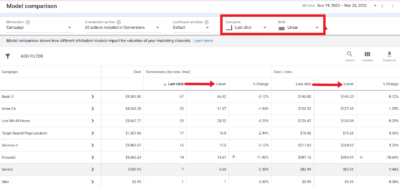Choosing the best Google Ads attribution model for your campaign will definitely give you a better insight into which part of your ad campaign played the most important role in getting those conversions. In this article, we will tackle all about the Google Ads attribution model, its definition, types, comparison, the right attribution model for you, and how to set it up for your ad campaign.
Don’t have the time to manage your Google Ads account?
Table of Contents
ToggleWhat Is An Attribution Model?
As per Google’s definition:
An attribution model is the rule, or set of rules, that determines how credit for sales and conversions is assigned to touchpoints in conversion paths.
The attribution model determines how each aspect of your ad campaign will be credited whenever a conversion is done. What keywords, device type, ad group, campaign, and so on, played a huge role in the conversion path.
The types of attribution models that you can use for your Google Ads campaign are:
- Last Click
- First Click
- Linear
- Time Decay
- Position-Based
- Data-Driven
How An Attribution Model Will Affect Your Ad Campaign
The attribution model will help you determine which part of your ad campaign is driving the most leads and conversion to your business. It also gives you insights into how your potential customer interacts with your ad, before converting into paying customer. This is very important data that you could use whenever you are making decisions for your ad campaign.
The attribution model chosen could make a difference in how one campaign performs compared to another. If you change the conversion attribution and attribute it in a different way, it might perform either poorly or better. That’s why you need to set the best Google Ads attribution model for your business goal.
Comparison Between Each Attribution Model
Last Click
If this is the first time you’ve encountered the attribution model and you have never tried changing it on your Google Ad campaigns, then your attribution model is probably using last-click as a default. The last-click attribution model gives all the credit for the conversion to the last click and corresponding keyword.
For example, a person does four search queries, they might click on your ad on the first search and then on the fourth search. Since you are using the last-click attribution model, the credit will be given to the fourth click.
First Click
As the name implies, this attribution model gives all the conversion credit to the first click and corresponding keyword. Using this attribution model could make a drastic change to your performance report.
For example, a potential customer searches on Google and clicks on your ad campaign. After 3 weeks they go back and search again then clicked on your ad for the second time, the credit will be given to the first click that was done 3 weeks ago.
Linear
The linear attribution model gives the credit to all clicks that your ad gets before the conversion happened, then it gives it an equal amount of credit.
For example, you get four clicks to your 4 different ads before one conversion, then each ad that was clicked will receive 0.25 points.
Time Decay
The time decay attribution model will give credit to all ad interactions or clicks but the interaction that was closest to the time of conversion will get the most points. Basically, this is similar to the linear attribution model but with a time component put in.
For example, a person clicks on your ad, and the next week they click on another ad again, ad then next week they clicked on a different ad again. The credit will be given more to the one that happened most recently and the credit given increases over time.
Usually, each conversion will be given decimal points since it pointing system is based on the time period.
Position-Based
The position-based attribution model gives 40% of the credit to the first and last click or ad interaction along with the keywords used. Then, any clicks or ad interaction in between will get the remaining credit of 20% which will be split across all those interactions.
This is the one that makes sense the most for advertisers because when you think about it, you’re gonna have a low funnel campaign that targets the exact keywords, and then you can look at the high funnel campaign that targets broad things. The mid-funnel can be hard to define, so this model puts a little weight on that.
Data-Driven
The data-driven attribution model considers all your past conversion data and distributes the credit to all past clicks that led to a conversion. In order to use this attribution model, you have to get 300 conversions at a certain time period before you can use it.
This might be the most confusing attribution model since you can’t determine how things are actually decided with the data-driven model. You won’t easily determine if this keyword gets any conversion since Google decides on how things are credited or given points.
Don’t know which attribution model to choose for your campaign?
You can learn more about the Google Ads attribution model here.
What Is The Best Google Ads Attribution Model For You?
Case #1 For Most Businesses
For most businesses, we recommend using ‘last click’ as the best Google Ads attribution model. Most advertisers use the same kind of strategy which is to target customers using the most important keywords or search terms.
For example, if you are selling dog toys, then you want to target lower-funnel keywords such as “dog toys for sale” since that search term definitely has the intention to buy dog toys. The keyword “dog toys for sale” will usually get the last click before conversion instead of using upper-funnel keywords like “benefits of dog toys” which implies that they are not yet ready to buy yet.
The last-click attribution model will tell you that from all the ads they saw and click, the last ad they click made them convert into a paying customer.
Case #2 Ad Campaign That Targets Lower-Funnel
If you are a brand new business with a low budget, we also suggest ‘last-click’ as the best Google Ads attribution model. Low-budget ad campaigns should target lower funnel keywords or search terms that have an immediate intent to buy or get services from you.
This directs you to the smallest section of the market which is gonna be more profitable. You’re going to get an extremely low impression but each impression is at least looking for your products and services. And the last click before conversion should definitely get the credit.
Case #3 Ad Campaign That Targets Both Lower And Upper Funnel
If you are going for a wide reach that targets both the upper and lower funnel markets, then we suggest using either position-based or linear as the best Google Ads attribution model. With these attribution models, all ad interactions from the start and at the end of the conversion path will be given credit.
This will help your make purposeful decisions on how you target your audience.
Case #4 Ad Campaign That Targets Upper-Funnel
If you are doing upper-funnel targeting, we also suggest going with either position-based or linear as the best Google Ads attribution model. A very wide audience reach is the cheapest cost of traffic, this is because you are targeting broad keywords or keywords that have no buying intent as of the moment. Again, the credit will be given to all ad interactions from the beginning and end of the conversion path.
But once you determine your audience, and you know which exact keywords you want to target, then go with the last-click attribution model. Because eventually, you will be needing to create a campaign that is focused on the lower or bottom-funnel.
Read this related article about the marketing funnel guide.
How To Set Up Attribution Model
Now that you know which is the best Google Ads attribution model for your business goals, you can set it up for your ad campaigns. To do this, just go to ‘Tools & Settings’ and under the ‘Measurement’ category, click ‘Conversions’.

Then, click on the conversion name that you want to change the attribution model settings.

You can see below the attribution model chosen for that specific conversion action. Keep in mind that some conversion actions like “phone calls” have a default attribution model and it is not editable.
Then, click ‘Edit Settings’.

Now, just click the dropdown icon then choose the best Google Ads attribution model that suits your business goals. Then click ‘Save’.

Check And Compare Attribution Model Using Your Campaign Data
Now that you have your attribution model set up, you can see how much each attribution model will change the way your conversions are presented.
Just go to ‘Tools & Settings’, then under the ‘Measurement’ category, click the ‘Attribution’ tab.

Then click ‘Model comparison’ which can be found on the left vertical menu.

Now you can see here a comparison between each attribution model. Just click on the drop-down button to choose which attribution model you want to compare.

You can see here how much will be the change (in percent) in conversion and cost/conv. data if you switch from last click to linear attribution model.
Our Final Thoughts
Although some might say that choosing an attribution model is a crucial factor for your ad performance, we think that you shouldn’t concern yourself too much with the attribution model for your ad campaign.
Let’s check out this example:

Notice that some of the % change does not have a huge value. This means that if we change the attribution model from ‘last click’ to ‘first click’, there will be around 1% to 5% decrease in conversions data.
But look at the campaign row that was boxed above, if you change the attribution model of that campaign conversion action from last click to first click, there will be a 71% increase in conversions and that’s a huge change. But why is the percent change so drastic? This is because the campaign is intended for brand awareness and the first click attribution model definitely suits that type of campaign goal.
Just keep in mind that this will not change the number of conversions you actually get, it will just change where it is attributed to in the campaign.
In reality, the attribution model will not make a dramatic difference to your ad performance, it is just a good indicator of how you want to receive data for your ad performance. But just take note that for brand awareness, the conversions will be presented differently.
Check out these articles that will help you step up your Google Ads campaign management:
- 5 Google Ads Optimization Tips & Tricks To Improve Your Campaign Strategy
- How To Use Ad Extensions – Best Step By Step Guide & Examples
- Get More Data From Google Ads – Easy Guide For PPC Data Segmentation
- Advanced Google Ads Optimization Strategies That’ll Outrank Your Competitors
- Google Ads Management Tips – Simple Practices That Will Save You Time & Energy
Not confident with your Google Ads skills?






